A T-shaped person is capable in many things and expert in, at least, one.
As opposed to an expert in one thing (I-shaped) or a ?jack of all trades, master of none? generalist, a ?t-shaped person? is an expert in at least one thing but also somewhat capable in many other things. An alternate phrase for ?t-shaped? is ?generalizing specialist?.
 I-shaped vs generalist vs T-shaped
I-shaped vs generalist vs T-shaped
T-shaped people is about adapting to varying demand.
Product delivery teams get asked to do a lot of different things, each of which require different skillsets.
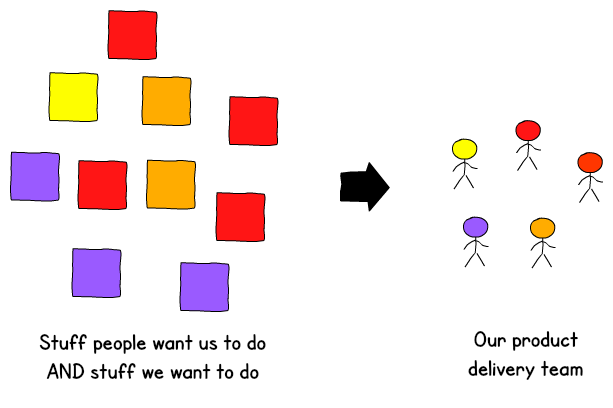 Stuff to do vs what we can handle
Stuff to do vs what we can handle
We have two general ways to respond to this. The first is to adjust what gets scheduled to balance against what we can handle, aka demand-leveling.
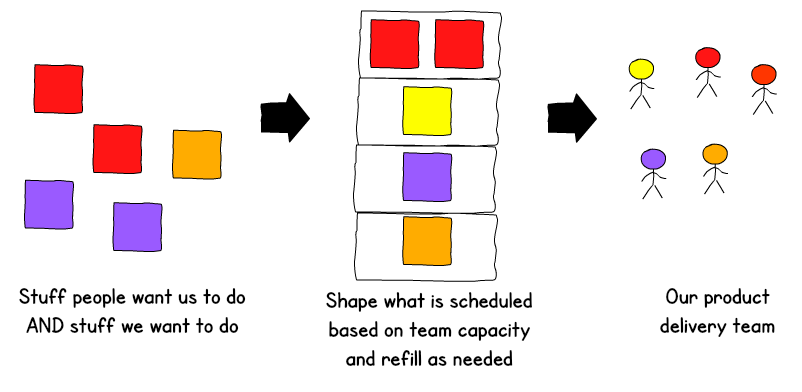 Address variability by shaping demand
Address variability by shaping demand
The second approach is to make our response more adaptable through T-shaped people.
 Address variability by being prepared to adapt
Address variability by being prepared to adapt
Use experts to clear bottlenecks.
Let?s imagine we have an incomplete task that is blocking overall progress due to dependencies. In this case, the best person to work on the blocking task is the person who can complete it the fastest. The word we assign to people who can complete a particular type of task the fastest is ?expert?. Experts are most valuable to clear bottlenecks.
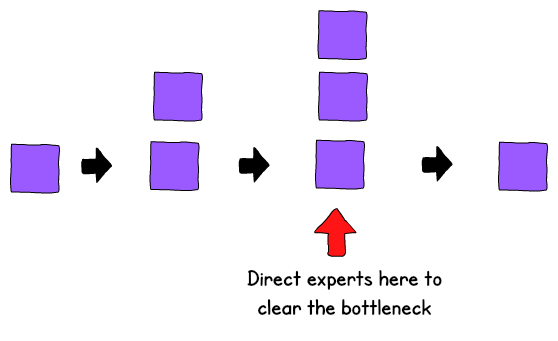 Leverage experts to clear bottlenecks
Leverage experts to clear bottlenecks
Use non-experts to free up expert time to clear bottlenecks.
Not every task requires an expert. Offloading non-expert tasks to non-experts frees up expert time to be available for bottlenecks. T-shaped people create more availability of non-experts for various tasks.
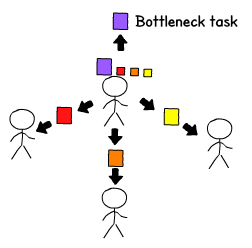 Use non-experts to free up experts to focus on bottlenecks
Use non-experts to free up experts to focus on bottlenecks
If non-experts can help with clearing bottlenecks, they should help.
Let?s say someone is an expert at a non-bottleneck task but can help out as a non-expert for a bottleneck task. What should be done? Even partial ability at a bottleneck is valuable. Being an expert on a non-bottleneck task is essentially wasting time. It has no impact on overall throughput. See Theory of Constraints.
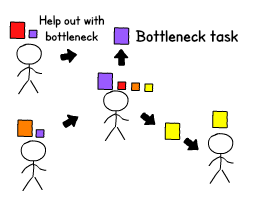 Even non-experts should help, if they can, at bottlenecks
Even non-experts should help, if they can, at bottlenecks
T-shaped people means we can do more with the same number of people (or do the same with less people).
If people only know 1 skill, then, if developing your product requires n skills, you will need n people. If people know more than 1 skill, then you will need <n people.
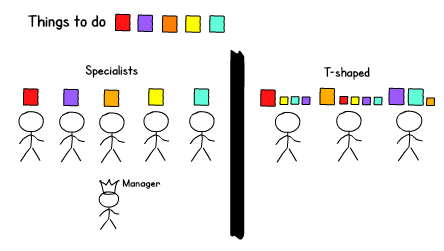 T-shaped people tends to reduce the number of people you need to do anything
T-shaped people tends to reduce the number of people you need to do anything
T-shaped people help us communicate more effectively.
By learning each others? skills, we also learn each others? domain-specific language. This helps us communicate more effectively as we have more understanding of different perspectives.
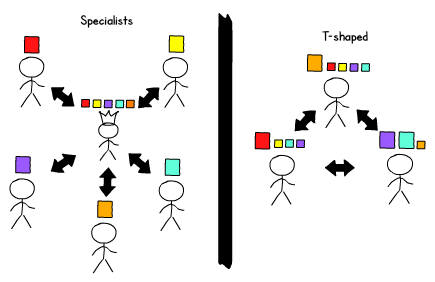 Cross-training skills also means cross-training language and perspective
Cross-training skills also means cross-training language and perspective
T-shaped people is about embracing human adaptability.
A skill that you know well and find mundane might be very interesting and challenging to someone else who doesn?t know that skill. A skill they know well and find mundane might be very interesting and challenging to you. Cross-training to be more T-shaped enables this learning and growth mindset.
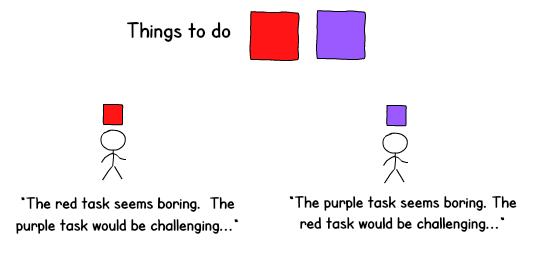 What?s boring for me might be challenging for you and vice versa
What?s boring for me might be challenging for you and vice versa
If you want to learn more about this overall topic, I recommend reading chapter 6: Applying WIP Constraints in The Principles of Product Development Flow.
NEXT: How to develop T-shaped people


